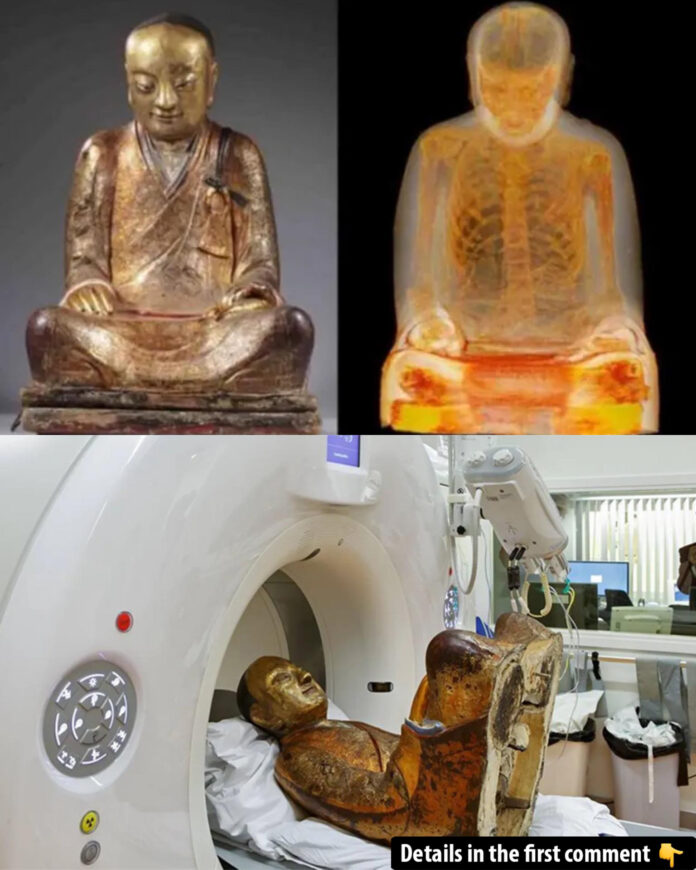What mysteries can a thousand-year-old Buddha statue hold? In a discovery that blends history, spirituality, and cutting-edge technology, researchers have unveiled the mummified remains of Buddhist master Liuquan hidden within the statue. This astonishing find not only illuminates ancient self-mummification practices but also offers a rare glimpse into the dedication and artistry of China’s Buddhist traditions.
The History of the Statue
The Buddha statue, dating back to around the year 1100 CE, was created during a period when Buddhism flourished in China. It is believed to house the remains of Liuquan, a revered monk of the Chinese Meditation School. This statue is not only an artistic masterpiece but also a spiritual artifact, crafted to preserve and honor Liuquan’s self-mummified body.
The statue’s journey to the West remains somewhat unclear, but it was eventually exhibited in the Netherlands as part of the Drents Museum’s “Mummy World” exhibition. Its presence in the West has allowed researchers and the public alike to marvel at this extraordinary relic, which seamlessly combines religious devotion and advanced preservation techniques.
Scientists were stunned to discover a 1,000-year-old mummy hidden inside an ancient Chinese Buddha statue – watch the video to see this astonishing find!
The Discovery Process
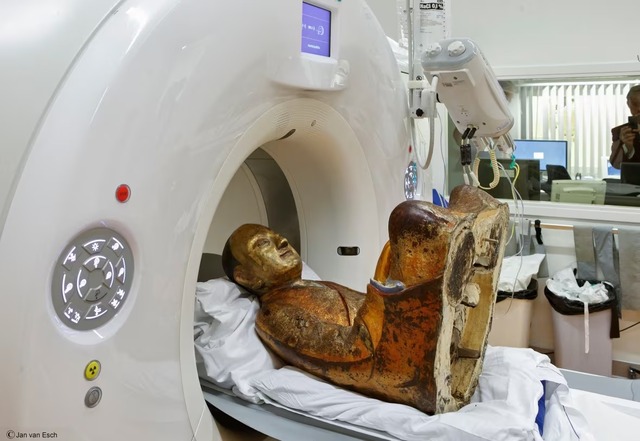
The hidden mummy inside the statue was revealed through a series of medical examinations conducted at the Meander Medical Centre in Amersfoort, Netherlands. Researchers used state-of-the-art CT scans, endoscopy, and DNA testing to uncover the secrets within the statue.
CT scans provided detailed images of the mummy’s skeletal structure, while an endoscopy revealed surprising details inside the abdominal cavity. Where organs once resided, researchers found an unidentified material and scraps of paper inscribed with ancient Chinese characters. These discoveries added layers of complexity to the statue’s history and purpose.
Bone samples were also taken for DNA analysis, providing further insights into the identity of the mummy and his possible lineage. The meticulous combination of medical technology and archaeological expertise has set a new standard for studying ancient artifacts.
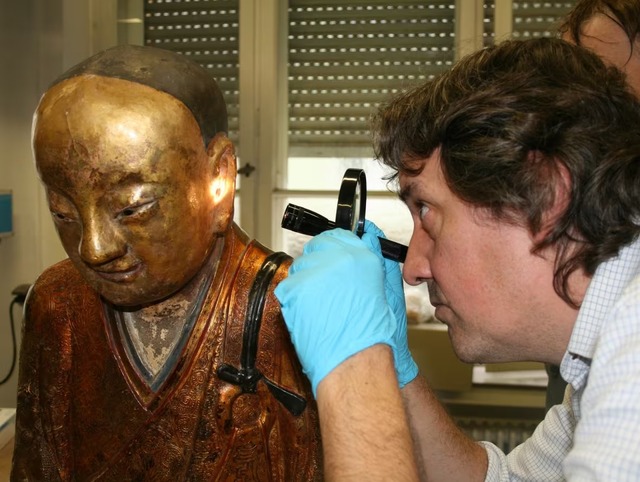
Self-Mummification Practices
The discovery of Liuquan’s mummified remains highlights the ancient and rare practice of self-mummification, a ritual undertaken by Buddhist monks in parts of Asia. This practice involved a rigorous regimen of fasting, meditation, and consuming toxic substances to gradually desiccate the body and prevent decomposition.
Self-mummification was seen as the ultimate act of devotion and spiritual discipline. Monks believed that achieving this state allowed them to attain enlightenment and serve as eternal symbols of dedication. The process could take years, with monks subsisting on minimal sustenance before entering a meditative state and sealing themselves in a tomb-like structure. Liuquan’s preserved remains inside the Buddha statue offer a rare example of this extreme spiritual commitment.
Significance of the Findings
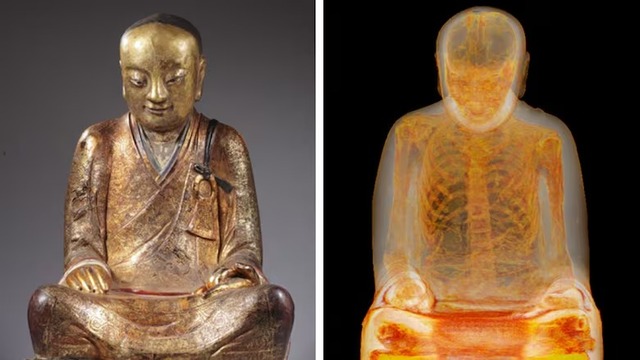
The discovery of Liuquan’s mummy inside the Buddha statue is significant for several reasons. First, it is the only known example of a Chinese Buddhist mummy available for scientific study in the West. This provides researchers with a unique opportunity to examine the intersections of religion, art, and preservation techniques.
The presence of ancient Chinese writings within the abdominal cavity adds another layer of cultural and historical importance. These inscriptions may offer insights into Liuquan’s life, teachings, or the spiritual beliefs of the time. The discovery underscores the intricate relationship between spiritual practices and the physical body in Buddhist tradition.
Scientific Research and Analysis
The research team, led by Buddhist art expert Erik Bruijn and supported by medical specialists, employed cutting-edge techniques to analyze the statue and its contents. CT scans revealed the intricate positioning of Liuquan’s skeleton, while endoscopic examinations uncovered the unexpected presence of paper fragments with Chinese characters.
The team’s interdisciplinary approach also included DNA testing of bone samples, which aimed to trace Liuquan’s lineage and determine his biological origins. These scientific methods have provided a comprehensive understanding of both the statue and the mummy it contains, setting a precedent for future studies of similar artifacts.
Cultural and Global Impact
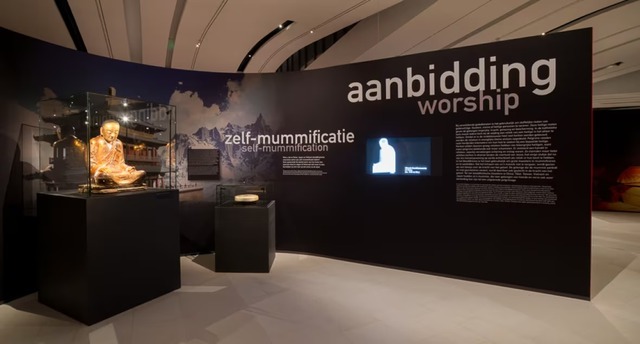
The discovery of Liuquan’s mummified remains has resonated with audiences worldwide, sparking discussions about the intersections of spirituality, science, and art. The striking CT scan images of the mummy went viral, captivating millions and highlighting the enduring fascination with ancient mysteries.
Exhibitions like “Mummy World,” which featured the statue, have brought Liuquan’s story to life for modern audiences. By showcasing artifacts like this statue, museums bridge the gap between ancient traditions and contemporary understanding, fostering a deeper appreciation for cultural heritage.
The Statue’s Current Status
The Buddha statue is currently on display at the National Museum of Natural History in Budapest, as part of the “Mummy World” exhibition. Following its time in Budapest, the exhibition is set to travel to Luxembourg, allowing more people to witness this extraordinary artifact firsthand.
Ongoing research continues to shed light on the statue’s origins and the practices of self-mummification. Each discovery adds to our understanding of Liuquan’s life and the broader cultural context in which he lived.
Conclusion
The Buddha statue containing the mummified remains of Liuquan is a testament to the profound dedication and spiritual discipline of Buddhist monks. This extraordinary artifact not only preserves the memory of an ancient master but also serves as a bridge between the past and the present, connecting modern technology with ancient traditions.
As researchers delve deeper into the secrets of the statue, its significance continues to grow, offering new perspectives on the intersection of faith, art, and science. The discovery of Liuquan’s mummy is more than just an archaeological marvel—it is a timeless reminder of humanity’s quest for enlightenment and the enduring power of devotion.
